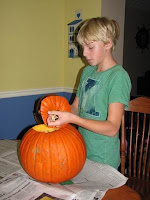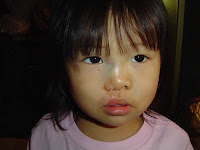Yesterday was the Chinese Moon Festival.
This Mid-Autumn Festival is held on the 15th day of the eighth month in the Chinese calendar, which is usually around late September or early October.
(Last year we were actually in China for this important event.)
The Moon Festival takes place at the time of the autumn equinox, when the moon is supposedly at its fullest and roundest, and many of the traditional festivities center around admiration of the moon and eating foods that resemble the moon.
(The moon was certainly full and bright last night.)
This day is very similar to our Thanksgiving.
Many of the stories surrounding the Mid-Autumn Festival center around the story of Chang’e, the lady who, according to legend, lives on the moon along with her companion, the Jade Rabbit.
Chang’e was purportedly the wife of a famous hunter, whose search for eternal life finally yielded a single pill of immortality.
Chang’e accidentally swallowed the pill and became an immortal, floating up to the moon and leaving her husband behind on earth.
Many Chinese people burn incense to the Moon Goddess, and her image is often featured on boxes of mooncakes.
Another story about mooncakes comes from Chinese folklore.
In this legend, Ming dynasty fighters who were rebelling against the Mongolian Yuan dynasty used mooncakes to smuggle messages to and from rebel bands, enabling them to defeat the Mongols.
Chinese mooncakes are small pastries about the size of a human palm that consist of a cookie-like crust and various fillings, ranging from lotus seed paste to red and green bean paste.
Traditional mooncakes usually have a bright orange salted duck egg enclosed in the filling, which symbolizes the moon.
Mooncakes are very rich and heavy, so each mooncake is usually cut into 4 wedges and shared.
Modern mooncakes have also made an appearance – many of these use fruit fillings instead of the traditional fillings.
There are also frozen mooncakes that are made with ice cream, as well as jelly mooncakes.
The traditional way to enjoy mooncakes is to sit with family and friends, and to eat the mooncake while admiring the moon.
We were 'lucky' enough to get to eat mooncakes last year during the Moon Festival.
'Lucky' is a relative term though.
We didn't think they tasted so great.
They're definitely not real dessert-y by American standards, that's for sure.
This is a picture of the one our guides (Rosa and Maggie) gave us as a gift last year.
Whether we enjoyed eating it as much, really isn't the point - we LOVED the gesture and the thought behind it.

Many people celebrate the Mid-Autumn Festival by lighting paper lanterns, which they carry on the end of a stick, or by lighting sky lanterns, paper balloons that float into the sky with the buoyancy provided by the hot lantern lit under them.
Dragon dances are also popular performances at this time, and many people wear traditional Chinese clothing.
In the adoption community, many families with children from China, use the Moon Festival to remember and discuss birthparents.
I think Leila's still a little young for that, but perhaps in the future we can do something similar.
We have lots of storybooks on topics like that, and we'll read then when she can sit still for an entire story.























